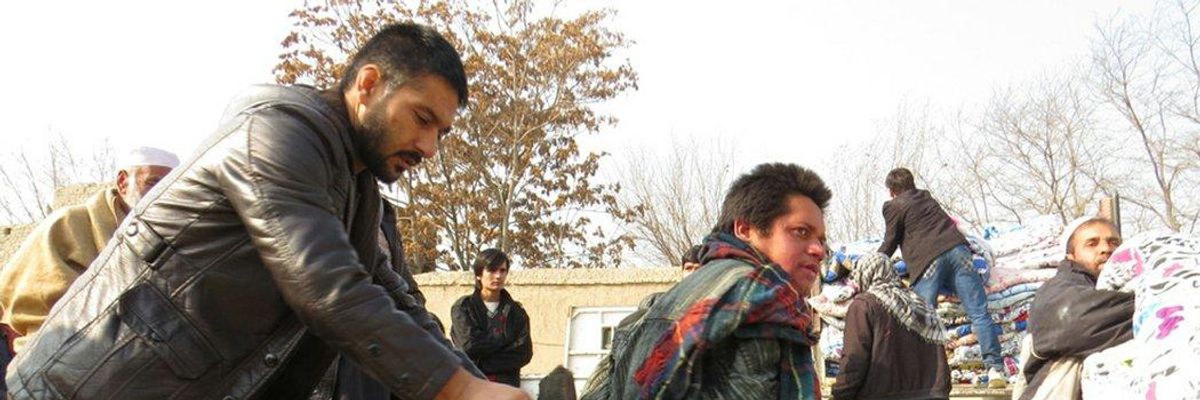In Kabul, earlier this month, my twenty-one-year-old friend Muhammad Ali reminded me of the importance of asking questions. Wanting me and others to understand more about the impact of war on his generation, he prodded: "Kathy, do you know about Jehanzib, Saboor, Qadeer, and Abdul, these brothers who were killed in Jalalabad?"
The brothers, ranging from twenty-four to thirty years of age, were killed by an Afghan "strike force" trained by the CIA, according to the news. In Jalalabad, two of them worked for the government and two ran their own businesses. The squad that entered their homes beat them severely and then killed them.
"They were kind and humble people, anyone who knew them loved the boys."
Family and friends felt sure the brothers had no links to militias. "They were kind and humble people, anyone who knew them loved the boys," Naqeeb Sakhizada, who owns a shop in the area and knew the brothers for more than ten years, told Al Jazeera."They cared for people and also had a good sense of humor."
In her WWI memoir, Testament of Youth, Vera Brittain wrote about volunteering as a nurse toward the end of WWI. Her clinic, in France, received European soldiers from the western front who arrived mutilated, maimed, exhausted and traumatized. One day, she thought she must be imagining the line of soldiers who marched past the clinic tents looking robust, upright and well fed. Then she realized they were from the United States.
New recruits come, and the war machine grinds on.
Looking forward, perhaps we won't see so many lines of U.S. soldiers marching through villages and cities in Afghanistan. A soldier operating a drone can continue the United States mission from afar.
We must still bear in mind Vera Brittain's pertinent comments about the realities of war:
"I have only one wish in life now and that is for the ending of the War. I wonder how much really all you have seen and done has changed you. Personally, after seeing some of the dreadful things I have to see here, I feel I shall never be the same person again, and wonder if, when the War does end, I shall have forgotten how to laugh. The other day I did involuntarily laugh at something and it felt quite strange. Some of the things in our ward are so horrible . . . one day last week I came away from a really terrible amputation dressing I had been assisting at--it was the first after the operation--with my hands covered with blood and my mind full of a passionate fury at the wickedness of war, and I wished I had never been born."
I look forward to going on with my life, once I recover from this broken hip. I can only imagine Vera Brittain's overwhelming ordeal. And I can only imagine the trauma of a child laborer awakened by an aerial attack in a pine nut forest, racing through the trees in hopes of escape, and perhaps surviving in great pain without a limb, or missing a brother, or wishing he had never been born.



